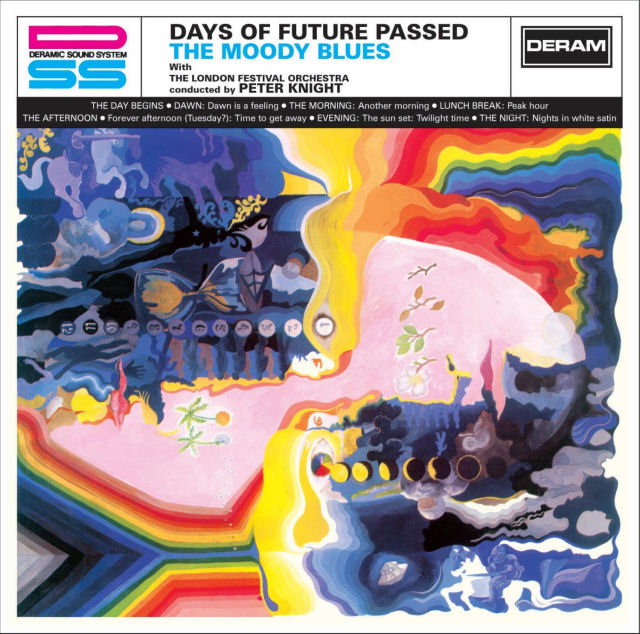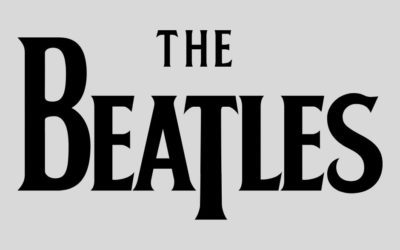Justin Hayward was born in Swindon, Wiltshire, England on October 14, 1946. He is a singer, songwriter and guitarist in the Moody Blues. In 1966 he replaced the departing guitarist Denny Laine after the group had achieved a hit record with “Go Now,” a cover of a Bessie Banks record.
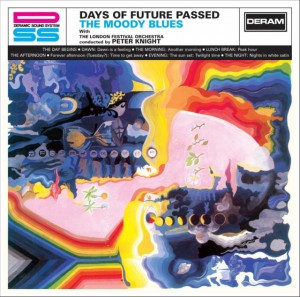 Hayward was initially contacted by Mike Pinder the Moody Blues’ keyboardist, who had received Justin’s letter and demos discs from Eric Burdon of the Animals where Hayward answered an ad in the “Melody Maker.” At the same time bassist/vocalist John Lodge replaced another founding member, Clint Warwick, joining another co-founder, drummer Graeme Edge. Ray Thomas, a vocalist and flute player was then enlisted for their unique sonic mixture.
Hayward was initially contacted by Mike Pinder the Moody Blues’ keyboardist, who had received Justin’s letter and demos discs from Eric Burdon of the Animals where Hayward answered an ad in the “Melody Maker.” At the same time bassist/vocalist John Lodge replaced another founding member, Clint Warwick, joining another co-founder, drummer Graeme Edge. Ray Thomas, a vocalist and flute player was then enlisted for their unique sonic mixture.
Hayward penned “Fly Me High,” a Moody Blues’ Decca single in 1967, and then “Leave This Man Alone,” and collaborated with Pinder on his “Love And Beauty,” the first Moodies record to incorporate the mellotron. This instrument is early version of sampling keyboards.
“The mellotron arrives in ’67 with ‘Strawberry Fields,’ ‘We Love You,’ and then the Moodies taking it on the road to reproduce their orchestral sound,” states Kenneth Kubernik.“ Along with King Crimson, they were the bands that featured this ‘progressive’ sound.’”
In late 1966, the Moody Blues performed new material at enthusiastic concerts in Belgium and Paris.
In ’67 the band recorded the “Days of Future Passed” with the London Festival Orchestra conducted by Peter Knight.
The Moody Blues agreed to this Decca label initiated assignment in exchange for the removal of existing monies the group had not recouped with the company at the time.
It was Decca Records executive, A&R man, and record producer Hugh Mendl who had first championed their joint sound endeavor that was initially intended to showcase his new Deram progressive music record label, a Decca subsidiary. The pairing would showcase label’s new “Deramic Sound System,” expanded channel separation, for a combined rock version of Dvorak’s 9th Symphony.
Mendl served as executive producer of the project and later penned the liner notes to the first pressing and reprinted for all subsequent editions.
The group agreed to participate but with no interference or session visits from the Decca executives, plus the guarantee of producer Tony Clarke and engineer Derek Varnals on their creative audio team.
Once the deal was in motion, the band and Knight immediately abandoned the concept of reworking the Dvorak piece and then cut their own compositions with Knight orchestrating.
In late ’67 the LP was released and a European tour along with tireless promotional efforts by loyal company supporters in the U.K. and U.S. that pushed the disc right into the record charts
Hayward’s principal songwriting contributions, “Tuesday Afternoon” and “Nights in White Satin” further helped propel the LP over the two million sales mark, and considered one of the first and most influential symphonic rock albums.
Hayward’s haunting and memorable “Tuesday Afternoon” effort was originally coupled with John Lodge’s “(Evening) Time to Get Away,” of “Forever Afternoon (Tuesday?).”
Justin Hayward would emerge as the band’s driving force over the 1967-1974 period, also writing future hits and turntable favorites, “Lovely to See You,” “The Story in Your Eyes” and “Question.”
Throughout the 60s and 70s, the Moody Blues released a string of other concept albums including “IN SEARCH OF THE LOST CHORD,” “ON THE THRESHOLD OF A DREAM,” “TO OUR CHILDREN’S CHILDREN’S CHILDREN,” “A QUESTION OF BALANCE,” “EVERY GOOD BOY DESERVES FAVOUR” and “SEVENTH SOJOURN.”
“In 1966 when Justin Hayward & John Lodge joined the re-forming Moody Blues the British invasion seamlessly progressed into prog rock,” suggests Morley Bartnoff, aka Cosmo Topper.
“You only have to listen to the the Original Master Mobile Sound Lab vinyl recording of ‘Days of Future Passed’ in order to hear the flashing magic of a full rich sounding 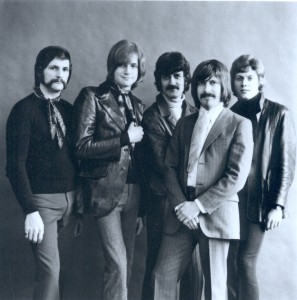 orchestra blending electric with the new and improved Moody Blues. Soon ‘Tuesday Afternoon’ as well as the evocative ‘Nights in White Satin’ was about to move into neighborhoods of radios worldwide If ever there was a band that demanded to be appreciated on vinyl it’s The Moodies!
orchestra blending electric with the new and improved Moody Blues. Soon ‘Tuesday Afternoon’ as well as the evocative ‘Nights in White Satin’ was about to move into neighborhoods of radios worldwide If ever there was a band that demanded to be appreciated on vinyl it’s The Moodies!
“The sequential tracking order on each of their two separate sides were produced and recorded to be experienced from start to stop on your revolutions per minute record player And of course their pre mellotroned ‘days’ is such a perfect place to begin your Moody Blues Record collection
“Now by the time ‘In Search Of The Lost Chord’ arrived full orchestras were replaced by mellotrons. Though their sonic capacity was vastly different from listening to real string and horn players. Combined with Mike Pinder’s actual cello and Ray Thomas’s C flute, alto flute & soprano sax, the Moody Blues continuously created wave after wave of majestic uplifting music sound tracking our late sixties and early seventies reverberating and forever rendering lost chords found.”
The Moody Blues has sold in excess of 70 million albums worldwide and has been awarded 14 platinum and gold discs. Their hits include: “Nights in White Satin,” “Tuesday Afternoon,” “Ride My See-Saw,” “The Story in Your Eyes,” “Isn’t Life Strange,” “Question,’ “I’m Just A Singer (In a Rock and Roll Band),” “Your Wildest Dreams,” and “I Know You’re Out There Somewhere.”
“Justin Hayward and the Moody Blues asked the tough questions and wove the answers into a sonic fabric of magical melody. You didn’t listen to a Moodies record – you shape-shifted yourself into the grooves and experienced it. That was my youth, my often moody and frequently blue rock ‘n’ roll grooming. ‘Question of Balance,’ ‘In Search of the Lost Chord,’ ‘To Our Children’s Children’s Children’ — these sacred platters rested snug up against the Beatles, Stones, Pink Floyd, Genesis and Elton John.
“While doing A&R duty at Arista Records in the mid-90s, I signed a progressive, eccentric band from Long Island called the Bogmen. I played the guys, ‘Legend of a Mind’ one day at the studio. ‘I think you should cover this.’ I said. They did and nailed it. Timothy Leary’s dead but the Moody Blues, thank the cosmos, are still alive. As for their celestial catalog of songs, well, those will live forever.” —Lonn Friend
Universal Music Enterprises previously in this decade previously released a “Moody Blues Greatest Hits” collection in two editions titled “ICON” and “ICON 2. The group also have a retail gold-selling boxed set compilation, “Time Traveler,” a greatest hits package from 1997 called “The Best of the Moody Blues,” and a double-CD, “Anthology” album package.
The Moody Blues just concluded their 32 city 2012 U.S. tour across the East Coast named “The Moody Blues: The Voyage Continues-Highway 45” in conjunction with the 45th anniversary of their landmark album, “Days Of Future Passed.” The trek was one of the Top 20 (#17) grossing tours this year according to Pollstar Magazine. The group will return to the U.S. in 2013 for more live dates.
On May 8 2012, WaterTower Music released the soundtrack for Johnny Depp’s new film “Dark Shadows,” which features “Nights In White Satin,” as the lead track. Singer and performer Izzy Chiat also includes a rendition of the song in his current stage show.
The movie’s soundtrack also includes recordings by Iggy Pop, Alice Cooper, T-Rex and Barry White.
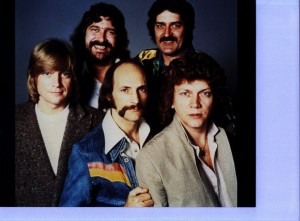 Justin Hayward has garnered a plethora of awards over the last few decades. In 2004, he was given the “Gold Badge” for lifetime achievement by the British Academy of Songwriters, Composers and Authors. From being portrayed and immortalized on “The Simpsons” to having their music featured in movies, television and in national advertisement campaigns for VISA, the Moody Blues are embedded in not only music history but in pop culture.
Justin Hayward has garnered a plethora of awards over the last few decades. In 2004, he was given the “Gold Badge” for lifetime achievement by the British Academy of Songwriters, Composers and Authors. From being portrayed and immortalized on “The Simpsons” to having their music featured in movies, television and in national advertisement campaigns for VISA, the Moody Blues are embedded in not only music history but in pop culture.
Harvey Kubernik and Justin Hayward interview
Q: Take me to the process of writing “Tuesday Afternoon” and then doing it for “The Days Of Future Passed” LP.
A: We had the idea for a stage show and then it really came from Mike who had written a song, ‘Dawn is a Feeling’ which I really loved. And then we got round to sort of thinking about this would be quite a good idea for a sort of thematic stage show about the day in the life of one guy. And I just sort of chose, ‘I’m gonna do the afternoon.’ And I had already done ‘Nights in White Satin’ written and recorded.
“So I went back to where my parents lived in the west country in England and with a guitar and went out that afternoon sat in the side of the field and smoked a joint and then came back with ‘Tuesday Afternoon.’ That was about it. I thought it was kind of a cheeky little song that wouldn’t really mean much.
Q: You debuted “Tuesday Afternoon” on a BBC radio session, before it was done with the band and the London Festival Orchestra conducted by Peter Knight.
A: It meant a lot to do the BBC after going professional. Totally. But I think it comes from us being a kind of reliable bread and butter live band for the BBC. We did a lot of ‘Easy Beat’ and ‘Saturday Club’ sessions for the Beeb. And they were very kind to us. But, you know, they got their monies worth out of us. They hardly paid us. (laughs).
Q: Did your early tunes like “Tuesday Afternoon” and ‘Nights in White Satin” even as you first wrote them and cut them with the Moodies always have such inherent cinematic qualities? Even without the orchestration they are quite visual numbers. For example, your mono recording of “Nights in White Satin” is included in the bonus disc of the 2006 deluxe edition 2CD set of “Days Of Future Passed.”
A: I wish I could say I thought of it in those terms. But it was probably more to do with just the sort of, I hope this doesn’t sound too pretentious, I’m sure it is, the kind of search for enlightenment that young people do, and psychedelic experiences that I was going through. And it has more to do with that probably than thinking of it in a contrived way, you know, in a film sort of way. Interesting enough, Tony Clarke used to think like that all the time.
Q: “Tuesday Afternoon” and “Nights in White Satin” were eventually recorded with the orchestra. Not the original game plan when you wrote them.
A: Not at all. But I have to say the single version of ‘Tuesday’ and the single version of ‘Nights in White Satin’ does not have any orchestra on it. It’s just a mellotron.
“But I was at the session when they did the orchestra sessions. And they did it in one take. They had already laid out the songs on a four-track machine and they were bouncing to another four track. And so they did one run though with the orchestra and then the take itself. And so I was astounded when I heard this stuff. And Mike had already done the spoken word stuff. So it was astounding to listen to that.
“But in truth, I thought we were making a kind of arty album that I might get invited to a cocktail party and might meet some nice lady from ‘The Observer’ and that’s about it. That was as far as a thought. So I wasn’t completely overwhelmed by it. I thought it was a limited appeal album. And really, the people who were in charge of it were the Decca stereo people. It was their album. A demonstration record. And we weren’t even asked into the control room.
Q: What role did the mellotron, even back then, play or impact your songwriting process and then recreating the Moodies sound on stage?
A: Well, Mike and the mellotron made my songs work. That’s the simplest way I can put it. When he was playing piano it was difficult for me to try and find something that  would be percussive on the piano and that would be interesting. And particularly because Mike had already played, you know, the greatest piano single ever, so that was going to be an impossible act to follow. But when he found the mellotron suddenly my songs worked, you know. When I played the other guys ‘Nights in White Satin’ they weren’t that impressed until Mike went on the mellotron and then everyone was kind of interested. (laughs). Because it really started to hang together from the mellotron.
would be percussive on the piano and that would be interesting. And particularly because Mike had already played, you know, the greatest piano single ever, so that was going to be an impossible act to follow. But when he found the mellotron suddenly my songs worked, you know. When I played the other guys ‘Nights in White Satin’ they weren’t that impressed until Mike went on the mellotron and then everyone was kind of interested. (laughs). Because it really started to hang together from the mellotron.
Q: “Days Of Future Passed” and your tunes on it, owing partially to radio airplay and constant rotation, have achieved anthem-like status.
A: I don’t think there’s another album like ‘Days Of Future Passed.’ And really, if you want to test your stereo system chose it because it’s still is one of the great quality studio recorded albums. And the engineer and the production had a lot to do with it.
“It’s just absolutely beautiful. And I would recommend it. The appeal of it was that we went our own way. The appeal was that we did think it was a small limited appeal album. And a lot of people who listen to it feel that way about it. ‘It’s just for me.’ It’s not a worldwide kind of thing. Not everybody liked it. It wasn’t universally liked. So I still like the fact that it was for an exclusive kind of audience. And only certain people would really appreciate or have the patience for it. And I think that’s it, really. That we went our own way and created our own identity with it.
Q: After “Days Of Future Passed” landed on the charts and sold, it was quite apparent being in this band was going to be your life. And the Moody Blues continued with another album. How do you even create a follow up to this work?
A: And the second album we were alone. But fortunately, Decca gave us Derek Varnels and Tony Clarke. And we had a load of songs, including ‘Legend Of a Mind,’ and maybe it might had been ‘Voices In The Sky,’ were done at the time of ‘Days Of Future Passed.’ Our tracks don’t take up much time when you put them all together, like on ‘Days of Future Passed.’
“So we already had a couple of things, And out of that came this thing that Mike used to do this thing on the piano. And the second album came out of that. And we had a theme early on that we write to and that was it. And then it coincided with our first tour of America. And we decided, well we didn’t decide, it was that we were everybody’ support band. That was the way we worked. We would support anybody and go on tour opening up. We always figured opening up was the best place to be. We’d be back in the hotel by 9:00 pm. Luckily ‘In Search of The Lost Chord,’ and ‘Ride My See-Saw’ and ‘Voices in the Sky’ took off.
Q: I saw the band live a couple of times in the L.A. area in 1969 and 1970, once with Spirit, and I know on occasion there were some technical problems with the Mellotron on stage. These were primitive days in the technological recreation of studio sound. Were there any comical situations where the mellotron broke down or slowed a show of yours?
 A: Even at our Isle of Wight festival show that (director) Murray Lerner shot, there were real problems with the voltage. ‘Cause the voltage affected the mellotron. So if the voltage fluctuated so did the mellotron’s pitch. That’s one. (laughs). There’s a couple of things like that where I’ve mixed live and you hear things that obviously the audience is never gonna hear.
A: Even at our Isle of Wight festival show that (director) Murray Lerner shot, there were real problems with the voltage. ‘Cause the voltage affected the mellotron. So if the voltage fluctuated so did the mellotron’s pitch. That’s one. (laughs). There’s a couple of things like that where I’ve mixed live and you hear things that obviously the audience is never gonna hear.
“And then the other one was doing our very first gig for Bill Graham at the Fillmore East and then for the mellotron to pack up in the first song. And for Mike to spend the first set with his head in the back of the mellotron was devastating. I just remember the blues guy, John Mayall, who was also on Decca, and extremely pissed off that we were above him on the bill. (laughs). I just remember him looking across and seeing him in the wings laughing his head off at Mike. And he knew Mike well. And so bless him. Good old John is still around.
Q: Girls always loved the Moody Blues. And still do. You were one of the first prog bands, and that audience, let alone demographic, where it was always 99 per cent males. Why were there girls at Moody Blues shows?
A: You noticed, Harvey. Well, you’re absolutely right. We always thought we were prettier than the rest of them. (laughs). We have a bond with our audience.
Q: I seem to remember in 1969 the Moody Blues played a Love-In in Los Angeles.
A: Yes.
Q: I always enjoyed that on your albums there were bits of spoken word and narration integrated in some of the songs. Recitation and talk. Was that part of the process when you were preparing the projects or doing pre-production?
A: It wasn’t so much by design. It was Graeme wanted to contribute. He was a good lyric writer. He was good at spoken word. He was a poet. And we had to get it in there somehow. And he would often try and bring the whole album theme together with his spoken word stuff. And he did that very well. So that’s where that came from.
“Then also that album called ‘The Zodiac Cosmic Sounds” on Elektra Records. (incorporating moog synthesizer from Paul Beaver and narration by Cyrus Faryar). That really turned us on. And we have to give that album some credit for really influencing us.
Q: From your “Question of Balance” LP I used to spin a Mike Pinder song, “How Is It (We Are Here)” that followed your “Question.”
A: Oh yes!
Q: Are you even aware that decades ago, those songs chronicled the world of physical existence, and others, like your tune “Cities,” was a comment on ecology and planetary concerns. Akin to the Doors’ “When the Music’s Over.” Some local radio stations used to couple the recordings together. Man, you were making impact beyond the chart hits. The ecology theme was translating back to us teenagers in Hollywood.
A: I was absolutely aware of that. I was a country boy and I never really, apart from a couple of times in my life for a few weeks, I never really, you know, lived in the city before. So I was very much in my mind. I love the English countryside. And London was a big kind of frightening place. But I knew it held the future. You had to be in London to get anything done. But it didn’t stop me kicking it.
Q: I always felt you and Mike on some specific tracks had a bit of the John and Paul vocal thing.
A: Well, I wouldn’t put it in that league at all, but Mike, for me, was one of the greatest musicians and talents that ever played in a rock group. I could not believe it.
“And when he left, I knew he was leaving, it was coming on and I could see it coming, so it wasn’t something sudden. It was a big empty space in my life. And I still miss him to this day. But you can’t make people be what they don’t want to be. I looked up to him, and to have him there in the early years was my one big inspiration. I have to put it like that. I was never in competition with Mike. Whereas a lot of the other guys have always thought they were in competition with me. Mike never thought he was in competition with me and I was never in competition with him. And our egos never clashed. But he knew I loved the stuff he did and in truth I don’t think we did justice to a lot of his things. Maybe because it was so many big egos. 5 big egos in a group. But he’s always been sadly missed. But he didn’t want to do it and that’s it.
Q: On your just concluded U.S. tour, and there will be some additional U.S. dates next year, what is it like singing and performing the songs from “Days Of Future Passed” that you initially wrote and recorded just after being a teenager, and now 45 years later it is you as an adult doing them.
Is the song or the message the same or different? I know you’ve embraced your back catalog, and active in re-mastering and income streams, but are these songs and the recordings now another experience for you?
A: Well, now that’s a good question. Because I think they are relevant today. There’s a naivety about them that I would not, and this is the same for all of us in the band, that I would not have the courage to write today. And it’s as simple as that. I’d be afraid of writing it or exposing something that would be to kind of criticism. So I’d play it a lot more safe now.
Q: What was it like over the last few decades overseeing re-mastering and reissues of your first batch of albums? What is it like listening to yourself and the band’s recordings after 5, 10 or 30 or 40 years?
A: My first reaction was when we went back (1972) to do the Quadraphonic, the 5.1 version of “Days Of Future Passed” which could only come from the Quad that the late Tony Clarke and engineer Derek Varnals had done it in Quad at the time. In the same studio with the same echoes with the same notes. And Derek Varnals was always good at keeping notes. And I was just astounded. I just thought, ‘How on earth did we do that?’ Because most of it was live and we were bouncing. You had to get it right and then bounce or to double track the vocals or anything. And my reaction was how on earth did we do it? I just don’t know, really. It’s like listening to another group of people. I’m far enough away now to be able to separate.
“I’ve written a lot of material lately and recorded it all, and I personally think it’s the best stuff I’ve ever done. And it will see the light of day soon. But there’s a naivety about that stuff I still embrace. We do a new tune on stage that Graeme wrote the words for, ‘You and Me.’ Every word is absolutely relevant at this moment and the things we’re going through politically and in the world. Philosophically and everything. I’m glad we did it and have the courage to do it and put it out.
(Portions of this article appeared in “Record Collector News” May-June 2012 issue).

